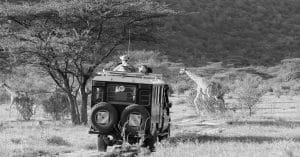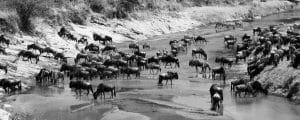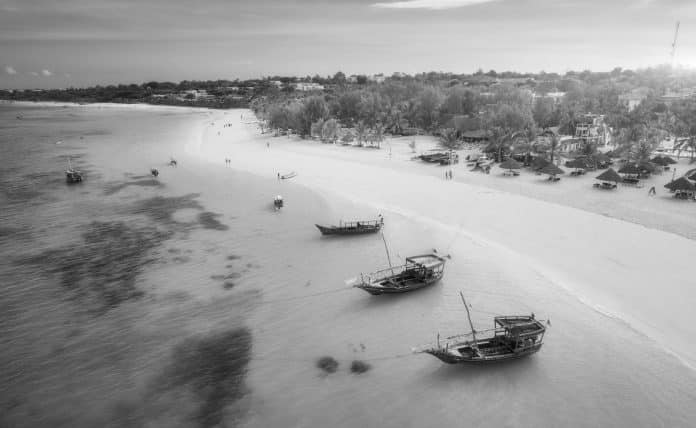A Tanzanian Escape: Finding the Perfect Time to Visit
Are you wondering or asking the question: when is the best time to fly to Tanzania? Don’t worry, we’ve got you covered! Embark on a transformative journey to Tanzania and discover the perfect time to visit this vibrant East African country. With its diverse landscapes, abundant wildlife, and welcoming people, Tanzania offers a one-of-a-kind escape for adventurous travelers seeking both relaxation and exploration. Whether you dream of witnessing the Great Migration in the Serengeti, climbing to the peak of Mount Kilimanjaro, or relaxing on the pristine beaches of Zanzibar, Tanzania has something for everyone.
Climate and Seasons in Tanzania
Before we answer your question, when is the best time to fly to Tanzania? Let’s discuss the different seasons in Tanzania. Tanzania’s climate plays a significant role in determining the best time to visit. The dry season, from June to October, is ideal for wildlife viewing as animals gather around waterholes and rivers. The weather during this period is generally sunny, with little to no rainfall. The dry season is also the perfect time to witness the Great Migration, where millions of wildebeest, zebras, and other animals move from the Serengeti to the Maasai Mara in search of fresh grazing grounds. This incredible spectacle is a true natural wonder and should not be missed.
On the other hand, the wet season, from November to May, offers lush vegetation and fewer crowds. The rainfall during this period rejuvenates the landscapes, turning them into a vibrant green oasis. The wet season is a fantastic time for birdwatching, as migratory birds flock to Tanzania, adding to the already diverse birdlife. While the rain can be heavy at times, it usually falls in short bursts, leaving plenty of time for exploration between showers.
Peak Tourist Seasons in Tanzania

To answer the question, when is the best time to fly to Tanzania? We will need to know about the peak seasons to visit. Tanzania experiences two peak tourist seasons throughout the year. The first peak season occurs from July to October when the weather is dry, and wildlife viewing is at its best. This period attracts a high number of visitors, especially to popular national parks such as the Serengeti and Ngorongoro Conservation Area. It is advisable to book accommodations and safari tours well in advance during this time, as availability can be limited.
The second peak season takes place from December to February when the weather is also dry and warm. This period coincides with the northern hemisphere’s winter holidays, making it a popular time for family vacations. The festive atmosphere, combined with the incredible wildlife sightings, creates a truly magical experience. However, it is important to note that prices for accommodations and flights can be higher during these peak seasons.
Off-Peak Tourist Seasons in Tanzania
If you prefer to avoid the crowds and have a more budget-friendly trip, consider visiting Tanzania during the off-peak tourist seasons. The months of November and April to May are considered shoulder seasons, offering a balance between favorable weather conditions and fewer tourists. During these periods, you can still enjoy wildlife viewing, although it may require more patience and flexibility due to the smaller animal concentrations.
Visiting during the off-peak seasons also allows you to experience Tanzania’s untouched beauty without the hustle and bustle of peak tourism. The national parks and attractions are generally less crowded, giving you a more intimate and authentic safari experience. Additionally, prices for accommodations and tours tend to be lower during this time, making it an ideal choice for budget-conscious travelers.
Pros and Cons of Visiting During Peak Seasons
Visiting Tanzania during the peak tourist seasons has its advantages and disadvantages. One of the main benefits is the high concentration of wildlife during these periods. The dry season, in particular, offers excellent game viewing opportunities, as animals gather around water sources, making it easier to spot them. The peak seasons also provide a vibrant atmosphere, with more tourists and a sense of excitement in the air.
However, the downside of visiting during peak seasons is the higher costs and larger crowds. Accommodations and flights tend to be more expensive, and availability can be limited if not booked well in advance. Some popular national parks may also feel crowded, especially during the Great Migration, where many safari vehicles gather to witness this natural phenomenon. If you prefer a more intimate and secluded experience, visiting during the off-peak seasons might be a better option.
Pros and Cons of Visiting During Off-Peak Seasons
Opting to visit Tanzania during the off-peak seasons has its own set of advantages and disadvantages. One of the main benefits is the reduced number of tourists, allowing for a more peaceful and intimate experience. You can explore the national parks and attractions at your own pace, without feeling rushed or crowded. Additionally, accommodations and tours are often more affordable, making it a great choice for those on a budget.
However, visiting during the off-peak seasons does come with a few drawbacks. Wildlife sightings may require more patience and flexibility, as animals are more dispersed throughout the vast landscapes. The weather can also be unpredictable, with occasional rainfall and muddy conditions. It is important to be prepared for the possibility of encountering wet weather and plan your activities accordingly.
Events and Festivals in Tanzania Throughout the Year

Tanzania is a country rich in culture and traditions, with numerous events and festivals taking place throughout the year. One of the most famous celebrations is the Zanzibar International Film Festival, held annually in July. This event showcases the best of African cinema and attracts filmmakers, artists, and enthusiasts from around the world. It is a vibrant and culturally diverse festival that offers a unique insight into the local film industry.
Another notable festival is the Ngorongoro Marathon, which takes place in April. This event combines sports and conservation, as participants run through the stunning Ngorongoro Conservation Area to raise awareness about wildlife conservation efforts. The marathon offers a challenging yet rewarding experience, with breathtaking views of the crater and surrounding landscapes.
In addition to these events, Tanzania celebrates various religious and cultural festivals throughout the year. From Eid al-Fitr to Christmas and New Year’s, these festivities showcase the country’s diversity and provide an opportunity to immerse yourself in local traditions and customs.
Recommended Activities and Attractions During Different Seasons

When is the best time to fly to Tanzania? The best time to visit Tanzania depends on the activities and attractions you are interested in. During the dry season, from June to October, wildlife viewing is at its peak. You can witness the Great Migration in the Serengeti, where millions of animals cross the Mara River in search of greener pastures. This awe-inspiring spectacle is a once-in-a-lifetime experience that should not be missed.
If climbing Mount Kilimanjaro is on your bucket list, the dry season is also the ideal time to embark on this adventure. The clear skies and mild temperatures make for a more enjoyable and safer ascent. However, it is important to note that climbing Kilimanjaro requires careful planning and acclimatization, regardless of the season.
For those seeking a beach getaway, Zanzibar is a tropical paradise that can be visited year-round. The dry season, from June to October, offers sunny days and warm temperatures, perfect for sunbathing and water sports. The wet season, from November to May, brings occasional showers but also lower prices and fewer tourists. Whether you prefer relaxation or adventure, Zanzibar’s pristine beaches and crystal-clear waters will not disappoint.
Tips for Planning Your Trip to Tanzania
When planning your trip to Tanzania, there are a few important factors to consider. Firstly, decide on the activities and attractions you wish to experience, as this will help determine the best time to visit. If wildlife viewing is a priority, aim for the dry season when animal concentrations are highest. If you prefer fewer crowds and lower prices, consider visiting during the off-peak seasons.
It is also essential to research and book accommodations and tours well in advance, especially during the peak tourist seasons. Popular lodges and campsites tend to fill up quickly, so securing your reservations early is advisable. Additionally, check visa requirements and ensure you have the necessary vaccinations and travel insurance before embarking on your Tanzanian adventure.
Lastly, pack appropriate clothing and gear for the activities you plan to undertake. Tanzania’s climate can vary significantly, so it is important to be prepared for both warm and cooler temperatures. Comfortable walking shoes, sunscreen, insect repellent, and a good camera are essential items to bring along.
Choosing the Best Time to Visit Tanzania
In this article, we have answered the question: when is the best time to fly to Tanzania? Tanzania offers a wealth of natural beauty, wildlife, and cultural experiences throughout the year. Whether you prefer the dry season with its incredible wildlife sightings or the off-peak seasons with their affordability and tranquility, there is a perfect time to visit for every type of traveler.
Consider your preferences, budget, and desired activities when choosing the best time to embark on your Tanzanian escape. No matter when you decide to go, Tanzania will captivate your senses and leave you with unforgettable memories. From the vast plains of the Serengeti to the snow-capped peak of Mount Kilimanjaro, Tanzania awaits your discovery. Start planning your adventure today and immerse yourself in the unparalleled beauty and awe-inspiring wonders of this remarkable East African country.
For more articles related to Things to Do in Tanzania (Zanzibar), click here!





























